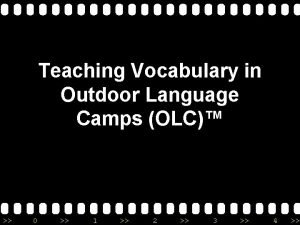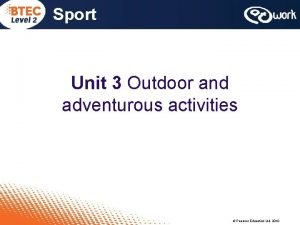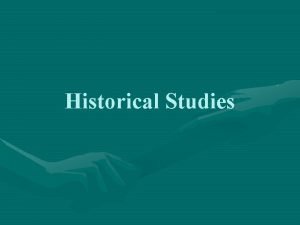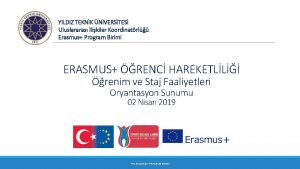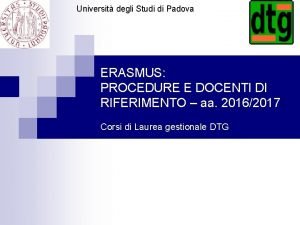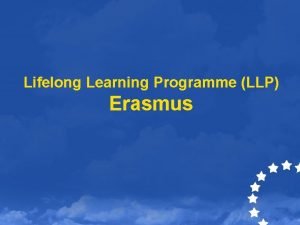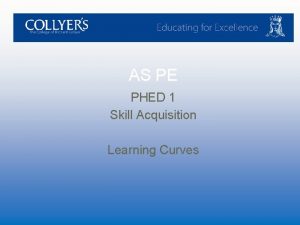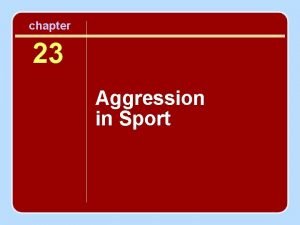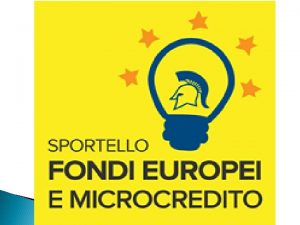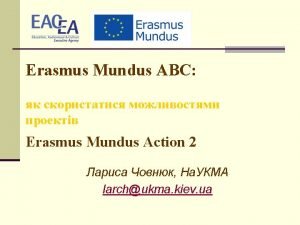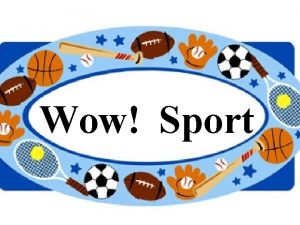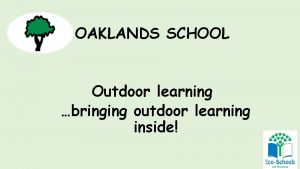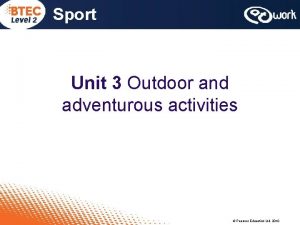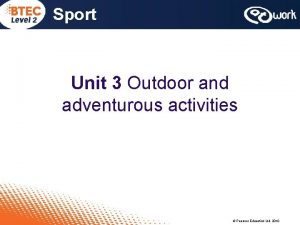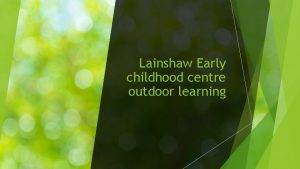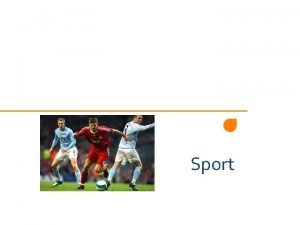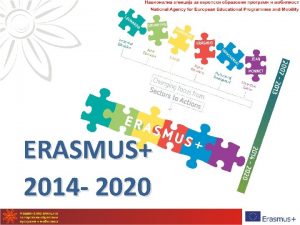ERASMUS KA 2 Outdoor learning and sport activities













- Slides: 13

ERASMUS+ KA 2 “Outdoor learning and sport activities” Partinico 8 th-12 th May 2017 Istituto Comprensivo “Cassarà-Guida” www. istitutocomprensivocassara. gov. it

INCLUSION: OUR MAIN GOAL, OUR CHALLENGE, OUR DAILY CHOICE ISTITUTO COMPRENSIVO “CASSARÀ- GUIDA” PARTINICO Partinico 8 th-12 th May 2017

THE ITALIAN EDUCATION SYSTEM FRAMEWORK In Italy the education system pays a great attention to inclusion issues, linked to disability, difference, disadvantage… In 1992 students with disabilities were allowed to attend mainstream schools, within the ordinary sections and classes, at all educational levels. In 2010 the education system recognized that pupils with learning disorders (dyslexia, dysgraphia, dysorthographia and dyscalculia) needed a new way of teaching according to their way of learning, rather than special teachers.

THE ITALIAN EDUCATION SYSTEM FRAMEWORK In addition to the learning disorders, in 2012 the education system enlarged the inclusive process to other kinds of difficulties, as socio-economic, cultural or linguistic disadvantages. Of course, these kinds of issues require more inclusive practices in classrooms through individualised and personalised education plans.

WHAT DOES INCLUSION MEAN IN OUR EXPERIENCE? The Istituto comprensivo “ Cassarà Guida” is attended by 986 students aged 3 to 13: 3– 5 = 210 6– 10 = 420 11– 13 = 356 65% belongs to middle-high class 35% comes from middle or low class. The inclusion process is related to students with: disabilities or specific learning disorders with medical certification (7%) socio-economic disadvantages, low class origins or “at risk” families (11%) cultural and linguistic disadvantages in relation with immigration process, coming from East European Countries and North Africa (3% )

GOALS OF OUR SCHOOL EDUCATION PLAN All students are welcomed Every pupil can feel well, can participate, give his/her positive contribution Each one can learn according to his/her pace Everyone knows that diversity is enriching Every student is a full member of a community based on the respect of rules, respect of different origins, beliefs, cultures, way of living. Eveybody can be an active member with a leading role in his/her learning process.

DIFFICULTIES AND LIMITS WE MEET IN EVERYDAY WORK Classes composed of more than 25 students Difficulty to give all students the time and the attention which everyone deserves Behavioural problems: lack of respect of rules, other people, environment Inability to work in groups and to cooperate Failures in learning processes Drop out (low percentage)

OUR APPROACHES TO BUILD AN INCLUSIVE SCHOOL - COMMUNITY: As far the students with special needs: � Periodic meeting with the Work Group for Inclusion (GLI) between support teachers, medical staff, parents, professional figures involved in the student’s life � Draft of Individual Education Plan and individualised teaching and learning � Personalised tools use of technology and compensatory

OUR APPROACHES TO BUILD AN INCLUSIVE SCHOOL - COMMUNITY: Focus on learner centred curriculum In each class support teachers work with the whole class and cooperate with colleagues to promote inclusion through personalised learning; Planning of activities by using inclusive methodologies such as cooperative learning, pair work and group work Extra curricular projects about emotional education, active citizenship, metacognition Drama, music, ceramics labs Teacher training on inclusive strategies and methodologies

OUR RESOURCES: CTS: area support centre which provides compensatory tools to the schools of our local area CTRH : area resource centre for disability constituted by a network of 15 schools. Aims: Coordinate Inter-Institutional Work-Group where teachers, medical staff, local institutions and parents meet to discuss disability issues Foster inclusion of disabled students Promote benchmarking and cooperation among schools in the local area Purchase of tools, books, didactic equipment Promote teacher training and new teaching methods Collect materials and spread best practices

OUR RESOURCES: Erasmus+ projects about inclusion The Erasmus+ KA 1 project “Harmony of differences through an inclusive teaching methodology” includes: Job shadowing activities Teachers training English courses for teachers Within this project we have had the opportunity to visit and to exchange experiences with colleagues of other European schools, as in Bremen (Germany) and in Oporto (Portugal).

OUR RESOURCES ERASMUS+KA 2 “Outdoor learning and sport activities” The project helps us to think about the value of our school system, to improve all that aspects that don’t facilitate inclusion and implement activities tailored on children with disabilities.

Thank you for your attention!
 Indoor sports outdoor sports
Indoor sports outdoor sports Borwick hall bedrooms
Borwick hall bedrooms Outdoor activities vocabulary
Outdoor activities vocabulary Outdoor adventurous activities
Outdoor adventurous activities What is popular recreation
What is popular recreation Primary and support activities
Primary and support activities Primary and secondary activities
Primary and secondary activities Cuadro comparativo e-learning m-learning b-learning
Cuadro comparativo e-learning m-learning b-learning Operating activities vs investing activities
Operating activities vs investing activities Ytü erasmus ofisi
Ytü erasmus ofisi Learning agreement erasmus unipd
Learning agreement erasmus unipd Llp erasmus
Llp erasmus Learning curves in sport
Learning curves in sport Instinct theory in sport
Instinct theory in sport


